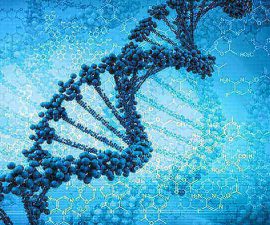Oxygenation is a term used to describe therapy that adds oxygen to a system, such as the human body. It may also refer to the treatment that combines particular medications with oxygen. It is used for a number of different health conditions such as emphysema, a kind of obstructive lung condition.
Emphysema
It is one of the major types of chronic obstructive pulmonary disease (COPD). In this lung disease, the walls of alveoli (air sacs) are destroyed and damaged. Consequently, the alveoli enlarge irregularly and declined in number.
Alveoli are responsible for the exchange of carbon dioxide out of the blood and oxygen into it. Here is where oxygen starts to go to the circulation. The larger spaces of alveoli are less efficient for gas exchange. This will impair the diffusion of carbon dioxide and oxygen (gas exchange).
Shortness of breath is the main symptom. It usually flares up on exertion such as during or after exercise. However, depending on the stage and severity of the disease, this symptom can occur more often even while at rest.
The exact way of how emphysema occurs is not fully known. Most experts blame cigarette smoking, though many smokers don’t develop the disease.
Emphysema is also linked to particular genetic condition in a few cases. Long-term exposure to other airborne irritants (such as air pollution) can also contribute to cause the disease.
There is still no cure and the damaged alveoli can be permanent. But if the disease is caught early, you can prevent it from worsening and have a normal quality of life. See also the chance to treat or even reverse emphysema in this section!
Oxygenation: What is it used for?
This oxygen treatment is aimed to help increase and restore the balance of the amount of oxygen (O2) in the body. It can be prescribed for people with particular medical conditions (typically such as lung or heart disease) in which they are more susceptible to have low oxygen levels in their bloodstream.
Oxygen plays a key role to support some body functions. Lack of oxygen in the blood can be serious. For instance, if not treated immediately this may cause serious damage to the brain, lungs, and heart.
Low oxygen levels in the blood, also called ‘hypoxia’, can cause discomfort symptoms such as feeling of breathlessness and tiredness. It may also cause edema (a condition in which excess fluid buildups in particular parts of the body such as in the ankles). Blue lips are also quite common in people with hypoxia.
Oxygenation can help relieve symptoms of hypoxia. Breathing air containing a higher concentration of oxygen can treat the deficiency, increasing the amount of oxygen in the blood.
There are a number of ways to give this therapy, including through a:
- Face mask positioned over the mouth and nose.
- Nasal cannula, tube placed under the nose.
- If the patients cannot take a breath on their own, advanced method such as tube positioned into the mouth & down the trachea (windpipe) may help. With this option, the tube is attached to a special machine (like ventilator machine).
The treatment should be used with prescription, because it may cause problem if not used properly. For instance, long-term use of this therapy may make you less fit. Furthermore, it may also cause a delay in catching the underlying cause of the symptom.
Therefore, it’s important to work together with your doctor when taking the treatment. Make sure you’re safe and allowable to take it. For more information, you can also visit an oxygen clinic in your local area for an assessment.
Again, oxygenation can be used to help treat people with a range of medical conditions. The main ones are for problems affecting blood circulation or breathing such as:
- Heart failure, a condition in which the heart doesn’t pump enough blood as well as it should.
- Particular conditions affecting the muscles and nerves.
- Pulmonary hypertension, high blood pressure that occurs in the blood vessels that line from the heart to the lungs.
- Other lung conditions such as cystic fibrosis and severe asthma.
How about emphysema? Is oxygenation the main treatment?
Does emphysema end with oxygenation?
Emphysema can affect the mechanism of the gas exchange in the lungs, leading to low oxygen level in the blood. And this deficiency can cause the feeling of breathlessness, the main symptom of emphysema, to get worse.
Oxygenation is also used for treating emphysema. But this can vary from patient to patient. While some require it as the main treatment, others may need it occasionally – depending on the severity of the disease.
To assess whether or not oxygenation is necessary, the doctor can use one of the following conditions:




